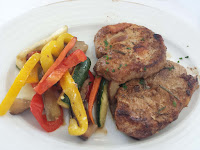Bonagiunta da Lucca; e quella faccia | Bonagiunta from Lucca; and that facedi là da lui più che l'altre trapunta | beyond him more embossed than the othersebbe la Santa Chiesa in le sue braccia: | had the Holy Church in its arms:dal Torso fu, e purga per digiuno | from Torso, and by fasting purgesl'anguille di Bolsena e la vernaccia". | the eels of Bolsena and the Vernaccia."--Dante Alighieri's Purgatorio Canto XXIV

Vernaccia di San Gimignano, perhaps Tuscany's greatest white wine. It has long been esteemed by Italians from Dante's time through the modern era when in 1966 it became the first Italian wine to be awarded DOC status and 1993 upgraded to a DOCG status (the only Tuscany white wine having this designation). The Italian hill town of San Gimignano is surrounded by land that used to be the ancient Ligurian sea. Thus fossils and shells permeate the pliocene soil and clay providing mineral composition to the Vernaccia wines. These wines are also known for a string floral bouquet and abundant acidity.

Fattoria Poggio Alloro specializes in not only Vernaccia di San Gimignano, but also a Grappa made from the must of the processed grapes. The name Poggio Alloro means Bay Leaf Hill, and it refers to the bay laurel bushes that grow everywhere on their property. This is a destination providing spectacular views of San Gimignano and the surrounding rolling hills as well as organically growing a multitude of agricultural commodities from grapes; olives; fruits; vegetables; and grains: barley, oats, corn, sunflowers, durum, wheat, and farro to produce the delicious durum, semolina and farro pasta. With these, they offer cooking classes as well as a round of wine tasting.

These wines include, of course, Vernaccia di San Gimignano; but also Sangiovese to produce Chianti wine; and Canaiolo, Volorino, Malvasia and Trebbiano to produce the traditional Vinsanto sweet wine. The Vernaccia di San Gimignano DOCG is 100% Vernaccia and on the nose expect honeysuckle and perhaps tropical fruit. On the palate notice the minerality - the saline jumps forth - then alternating with pear, citrus and slight bitter almonds.
The Grappa di Vinacce di Vernaccia is a distillate obtained from the pomace (the solid part of the grape composed of skins and seeds) of Vernaccia grapes. This grappa is noticeably fragrant with both citrus and stone fruit mixed with a soft petrol.







